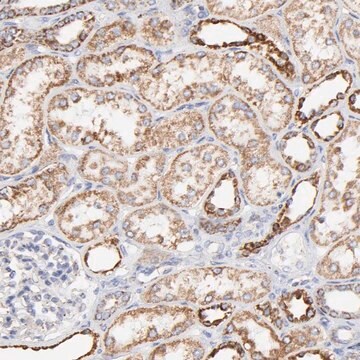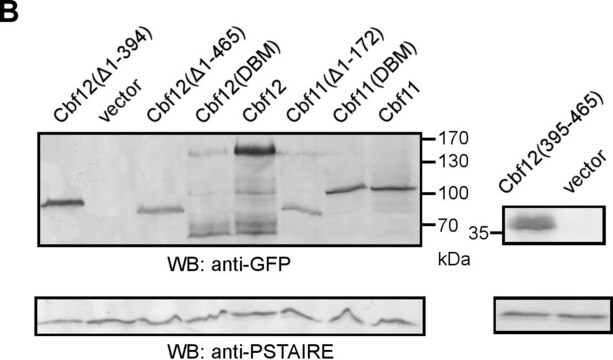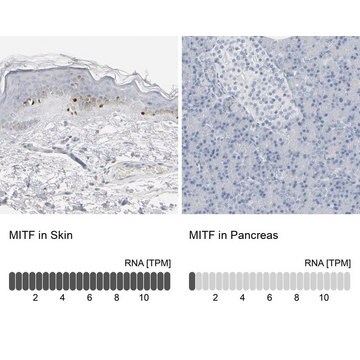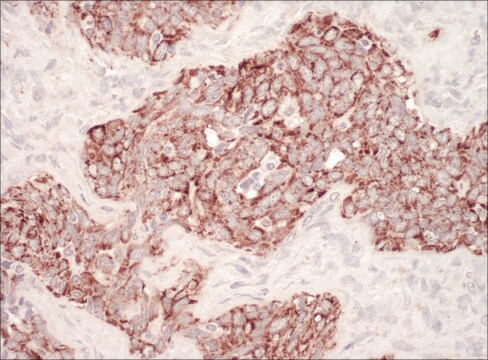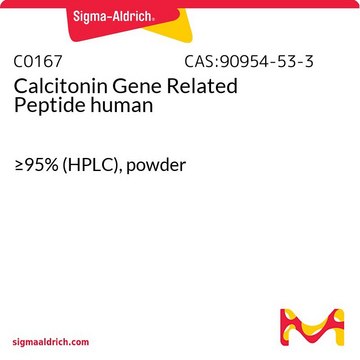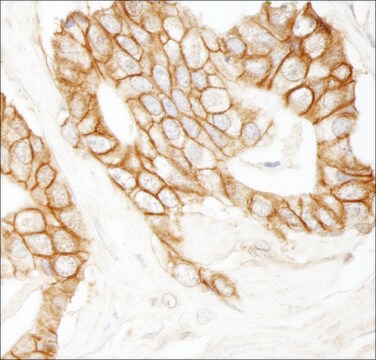AB10526
Anti-COX4 Antibody
from rabbit, purified by affinity chromatography
Sinónimos:
cytochrome c oxidase subunit IV isoform 1, cytochrome c oxidase subunit IV1, Cytochrome c oxidase polypeptide IV, cytochrome c oxidase subunit 4 isoform 1, mitochondrial
About This Item
Productos recomendados
biological source
rabbit
Quality Level
antibody form
affinity isolated antibody
antibody product type
primary antibodies
clone
polyclonal
purified by
affinity chromatography
species reactivity
human
packaging
antibody small pack of 25 μg
technique(s)
immunohistochemistry: suitable (paraffin)
western blot: suitable
NCBI accession no.
UniProt accession no.
shipped in
ambient
storage temp.
2-8°C
target post-translational modification
unmodified
Gene Information
human ... COX4I1(1327)
General description
Specificity
Immunogen
Application
Apoptosis & Cancer
Apoptosis - Additional
Quality
Western Blot Analysis: 0.1 µg/mL of this antibody detected COX4 in 10 µg of human fetal skeletal muscle tissue lysate.
Target description
A non-specific band may be observed at ~58 kDa
Physical form
Storage and Stability
Analysis Note
Human fetal skeletal muscle tissue lysate
Other Notes
Disclaimer
¿No encuentra el producto adecuado?
Pruebe nuestro Herramienta de selección de productos.
Optional
Certificados de análisis (COA)
Busque Certificados de análisis (COA) introduciendo el número de lote del producto. Los números de lote se encuentran en la etiqueta del producto después de las palabras «Lot» o «Batch»
¿Ya tiene este producto?
Encuentre la documentación para los productos que ha comprado recientemente en la Biblioteca de documentos.
Artículos
Loading controls in western blotting application.
Nuestro equipo de científicos tiene experiencia en todas las áreas de investigación: Ciencias de la vida, Ciencia de los materiales, Síntesis química, Cromatografía, Analítica y muchas otras.
Póngase en contacto con el Servicio técnico

